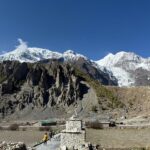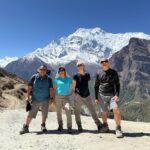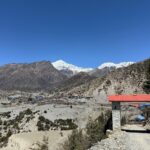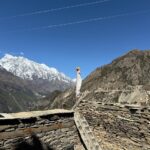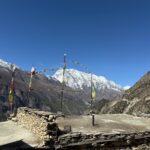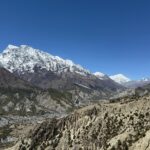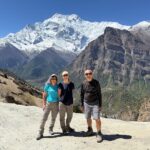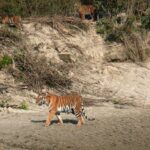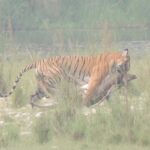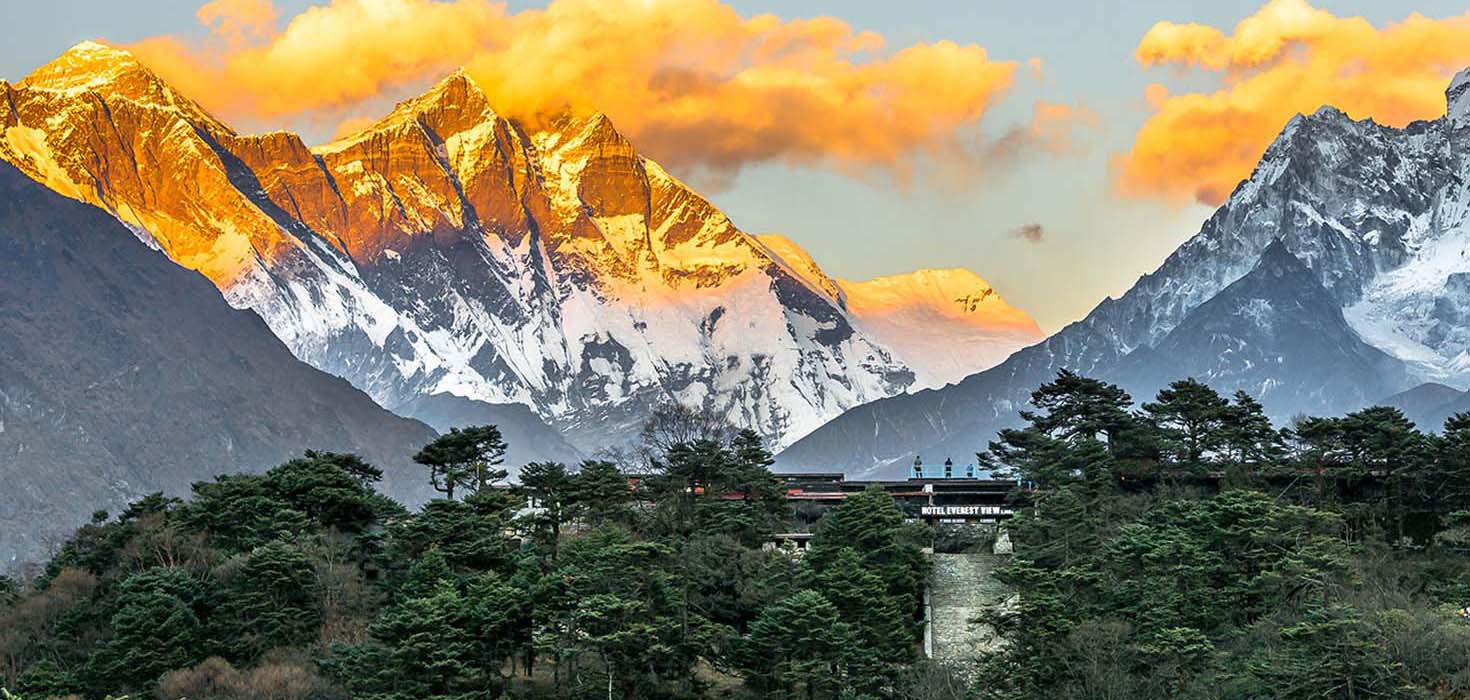
30 Best Tips for Everest Base Camp Trek
Are you dreaming of embarking on a trek to Everest Base Camp? The experience of journeying through the Himalayas and standing at the base of Everest in person is truly awe-inspiring. There is a compelling reason why this majestic peak is considered one of the 7 Natural World Wonders. The experience of standing at an elevation of 5,354m, with the towering presence of Mt. Everest above you, is truly surreal.
Although we believe that almost anyone can enjoy trekking to Everest Base Camp, there are a few things that can enhance the overall experience and make the trip more enjoyable and seamless. This article will discuss some of the top tips, tricks, and travel hacks for trekking to Everest Base Camp.
If you are limited to selecting just one trek in Nepal, we highly recommend choosing Everest Base Camp. Here, we present a comprehensive list of 20 valuable tips for trekking to Everest Base Camp. These tips will help you save time and money while making your trip more comfortable, allowing you to fully enjoy this once-in-a-lifetime adventure!
Embarking on the Everest Base Camp Trek is a dream adventure for many trekkers worldwide. To ensure a safe, enjoyable, and successful journey, here’s a comprehensive guide featuring 30 best tips for Everest Base Camp trek:
“Mountains are the beginning and the end of all natural scenery.”
By John Ruskin
1. Use the right trekking agency
There are multiple options available for trekking to Everest Base Camp. These include joining a professional trekking company, hiring a personal guide or porter, or embarking on the journey independently. In the majority of cases, it is highly beneficial to hire a local professional trekking company. A professional trekking company possesses the necessary organization and infrastructure to ensure a seamless experience. This implies that they possess a greater capacity to handle situations such as flight delays, emergency services, communication challenges, and other similar circumstances. Opting for a local trekking company, like Himalayan Wonders, offers the advantage of gaining insights into the knowledge and culture of the local guides. Additionally, you can benefit from the company’s established relationships in the area.
2. Train for the trek
Although individuals of various ages and physical abilities can undertake the journey to Everest Base Camp, it is advisable to be in good physical condition in order to ensure a more comfortable experience. You don’t necessarily need to be a triathlete in order to hike to Everest Base Camp, but it is important to ensure that you have the necessary endurance to complete the journey.
3. Plan an extra days at the end
It is advisable to allocate any additional days you have for your Nepal trip towards the end of your trek, rather than at the beginning. Flights departing from Lukla and returning to Kathmandu may experience delays due to inclement weather conditions. It is advisable to avoid scheduling an international flight for the day after being stranded in Lukla due to inclement weather.
4. Break in your shoes beforehand
If you are someone who enjoys hiking frequently, it is likely that you own a pair of hiking boots and use them regularly. We recommend considering some of the trekking boots we have available. Obtaining a specific type of boot can be more challenging depending on the country in which you reside. Here are the trekking boots that we have used and highly recommend. However, it’s important to note that there are numerous excellent and high-quality boots available in the market.
When selecting a trekking boot, it is crucial to consider several key factors, namely the fit, ankle support, waterproofing, and stiffness. Ensure that you are comfortable with the fit of your boots and that you have properly broken them in before your trip. It is advisable not to arrive on a trip wearing a brand new pair of boots. Similarly, it is important not to embark on a trip wearing boots that are excessively worn and falling apart. Never compromise on the quality of footwear when embarking on a multi-day trek!
5. stay within the weight limits for your luggage
The flight from Kathmandu to Lukla, which marks the start of the Everest Base Camp Trek, enforces strict weight restrictions. The weight limit for your main pack is 10kg (22 lbs), and for your carry-on, it is 5kg (11 lbs). While it is possible to pay for additional luggage, it is generally not recommended. You or your porters will be responsible for carrying any additional luggage you bring on your flight to Kathmandu up the mountain during your trek.
6. prepare for potential flight delays
The Lukla flight is contingent upon favorable visibility conditions in both Kathmandu and Lukla. Flights can often experience delays due to the rapidly changing conditions on the mountain. Nepal, being a developing country, often faces challenges with organizing communications at its airports. Sometimes, you may be fortunate enough to arrive at the airport and catch a flight right away. However, more often than not, you will likely have to wait for a few hours before your flight. It is advisable to be prepared for a potential delay by bringing along a book, some snacks, and a little extra patience.
Although it is normal to experience brief delays, we understand that longer delays can cause significant stress. Using an Everest Base Camp Trekking company can provide extra assistance in situations like this. If we are unable to book you on an earlier flight, we can assist you in arranging accommodations during your wait. Rest assured, we will continue our efforts to secure the best possible flight for you.
7. Expect a flight diversion to Ramechhap
Over the past few years, the flight routes at Kathmandu airport have undergone changes due to a combination of construction activities and an increase in flight volume. During the peak season, a significant number of flights are being redirected from Kathmandu to Ramecchap. Ramechhap, located 140 km (85 miles) from Kathmandu, is a small airstrip that currently lacks significant tourist infrastructure.
The journey to the airport typically takes approximately 4 hours, while the return trip to Kathmandu can range from 5 to 6 hours depending on the traffic conditions. While it may be inconvenient and present an additional challenge, the need to wake up earlier and commute to Ramecchap via a windy mountain road does not significantly alter your trekking schedule. Himalayan Wonders has a dedicated team member stationed in Ramecchap to ensure smooth coordination of flight departures and to facilitate helicopter arrangements upon request.
8. Take care of your feet
Severe blisters can halt a trek just as effectively as altitude sickness. We suggest bringing duct tape or moleskin and promptly treating the affected area at the first sign of discomfort, rather than waiting until it develops into a blister.
9. bring your own pillowcase
Although tea houses typically provide bed sheets, it is often recommended to use your own pillowcase for both safety and comfort reasons. Although we have not encountered any problems with pillowcases during the Everest Base Camp trek ourselves, we have heard of travelers contracting conjunctivitis (pink eye) in different places. This unfortunate situation could have been avoided by simply bringing along an extra item.
10. Do not expect high for the bathroom
Although the owners of the tea houses along the Everest Base Camp trail strive to provide an exceptional experience, it is important to acknowledge the remote and challenging nature of the area. The cleanliness of the bathrooms is unlikely to meet your standards. These toilets are typically minimalistic, sturdy, and need to be manually flushed by pouring water from a bucket. Make sure to bring hand sanitizer and wipes with you, as some sinks may be located outside and exposed to cold temperatures. Additionally, be prepared to squat if necessary.
11. prepare for cold and rainy weather
You might be pleasantly surprised by how warm it can get during the day when it’s sunny. During the initial days of trekking, when the elevation is still relatively low, it is common for most trekkers to opt for t-shirts and shorts as their preferred attire. However, as the sun sets, the temperatures drop quickly. To stay warm while sleeping, it is recommended to wear a warm hat and thermals. Additionally, you can enhance your comfort by placing a Nalgene bottle filled with hot water inside your sleeping bag. Make sure to carry a poncho in your day pack, even if it appears to be a sunny day. The weather conditions on the mountain can change rapidly.
12. Remember to stay hydrated
It is important to stay hydrated while on the trail, so be sure to drink plenty of water. Additionally, it is a good idea to always carry a spare bottle of water with you. During the day, you have the option to purchase bottled water from various tea houses along the trail. The price of a liter of water at the beginning of the trek in Lukla is approximately $1 USD. However, as you make your way to Gorek Shep, the prices increase to around $4. A better option for saving money and keeping the mountain clean is to bring chlorine or iodine tablets and use them to purify water from the local streams when filling your bottle. Please request guidance from your guide to help you find the correct path. Most villages typically have a clearly identifiable source of drinking water, often in the form of a pipe or hose located along the trail.
13. Make sure you eat enough
We offer three meals per day during the trek, along with a hot beverage served with each meal. If you have a big appetite, I recommend ordering the Dal Bhatt, as it is served in an all-you-can-eat portion. The traditional Nepali dish includes rice, dal, a vegetable, papad (fried bread), and pickle. We would like to suggest trying the vegetarian options. The meat is transported to Lukla and then carried up the mountain, which makes it unlikely that the meat you consume will be fresh. It is acceptable to consume eggs and Yak cheese, but it is advisable to moderate the consumption of cheese.
14. Prepare Yourself Mentally for Your Trek
Engaging in physical training and dedicating yourself to thorough preparation can contribute to the development of mental strength. Make sure to prioritize trekking and multi-day trekking during your preparations. Additionally, it is important to familiarize yourself with all the gear you will be using on your trip. Prepare yourself mentally for the challenges of the developing world.
During our trek to Everest Base Camp, we will be staying in cozy tea houses that are managed by the local Sherpa community. You will have a bed to sleep in, although it may not be the most comfortable bed in the world. It will be a twin-shared room. If you choose to, there are shower options available further along the trail. However, it is common for people to maintain cleanliness by using baby wipes and a bowl of warm water on a daily basis. Sometimes, the toilet situations can be challenging. In certain places, instead of Western-style toilets, you may come across a hole in the ground instead of a toilet bowl. Make sure you are ready for the diverse cultural experiences you will encounter during your journey!
15. Make sure to use every piece of gear before embarking on the trek
It is not advisable to arrive at an Everest Base Camp trek with a bag filled with brand new gear. It is important to thoroughly inspect each piece of gear you plan to bring, ensuring that it fits properly, functions correctly, and is a logical choice to include. During the trek, it is essential that you strictly adhere to the weight limit imposed. Please refrain from bringing any unnecessary or uncomfortable items with you during the trek. They will remain in your bag, being carried up and down without any purpose. The weight limits for the flight to or from Lukla are 10kg (22 lbs) for your duffel bag and 5kg (11 lbs) for your backpack. During the trek, the weight limit for your duffel bag is a maximum of 15kg (33 lbs).
16. Remember to bring extra spending money
There are several essential items that you will need on the trail, and it’s advisable to have some extra money available for them. There is an increasing availability of amenities along the trail, such as cafes, laundry services, and shops where you can buy snacks or souvenirs. WiFi is generally available for purchase and use throughout the entire trek, in every village. When you reach the end of your trek, it is customary to show appreciation for the guides and staff in Lukla by giving them a tip for their exceptional work. It is important to have some extra money with you during your trip. The specific amount you should bring will depend on your planned purchases.
17. Ensure that you have the appropriate gloves
Ensure that you have sufficient gloves for the journey. Typically, the parts of your body that are most susceptible to feeling cold are your head, feet, and hands. Therefore, it is important to ensure that you purchase high-quality gloves for the trip. It is recommended to have both a pair of liner gloves and a larger, waterproof glove. It is important to have the ability to wear the waterproof glove over the liner. This way, if you need to remove the larger glove to operate a camera or perform any other task, you will still have the liner on. In freezing temperatures, it is important to never expose your fingers. When ascending Kala Patthar, it is essential to equip yourself with a reliable pair of insulated gloves, comparable to those worn for skiing. If you are aware that your hands are very cold, you might want to consider wearing a pair of insulated mittens.
18. Make sure to have a cover for your water bladder
This tip is extremely important! Ensure that you have a nozzle cover for your water hydration system. The trail to Everest is teeming with a diverse array of animals, trekkers, porters, guides, and local residents. The thought of dirt, feces, dust, and bacteria attaching to the water spout that you put your mouth on is quite alarming! Always remember to cover the nozzle of your bladder when placing your backpack on the ground to prevent any bacteria from coming into contact with it. Additionally, you can utilize hand sanitizer to keep your nozzle clean in the event that it comes into contact with the ground. Make every effort to avoid getting sick.
19. It is advisable to minimize your exposure to the sun
In low oxygen environments with limited UV protection, it is important to ensure that you are adequately shielded from the harsh rays of the sun. To protect yourself from the sun, it’s important to wear a brimmed hat and long sleeves. Additionally, remember to apply factor 50 sunscreen regularly throughout the day. If you experience sunburn, it becomes an additional challenge for your body as it strives to reach Everest Base Camp.
20. It is important to always wear sunglasses
It is crucial to protect your eyes from the harsh UV rays while on the trek. We recommend choosing a Category 4 sunglass for optimal protection in glacial conditions. Sunglasses are incredibly important to us, to the extent that we often bring an extra pair with us whenever we travel!
21. Use your trekking poles
The trail to Everest Base Camp is not a straightforward path. The landscape consists of rocks, boulders, hills, and rivers. Using trekking poles and being comfortable with them can provide daily protection for your joints and muscles. Using your muscles during long downhill sections will not only protect your joints but also prevent unwanted fatigue.
22. Stay Organized
When you arrive at a new lodge each day, it is important to organize your room and establish a routine for managing your sleeping space. Upon your arrival at the lodge, you will receive the key to your room. Once you are inside, it is advisable to take out your sleeping bag and arrange your bed. Now, you can proceed to organize your duffel bag and freshen up! Remove all the clothes that you have been wearing during your trek, allowing them to dry and air out. Then, change into your tea house attire. It is important to become familiar with your routine so that you can avoid wasting valuable energy by worrying about the whereabouts of your necessary items.
23. Bring shampoo and soap
Showering facilities are increasingly available in the Everest Region. It can be very useful to bring a small amount of shampoo and a bar of soap. When a shower is not available, you can still clean your hands and face by using a bar of soap and some water. Maintaining personal hygiene and preventing bacterial contamination on your hands and face will be of utmost importance while hiking on the trail. While the baby wipe shower is a popular choice, many individuals are now opting to bring additional items such as dry shampoo.
24. bring a nail clippers
Remember to trim your fingernails and toenails before going on the trip. Maintaining personal hygiene while on the trail is crucial for ensuring your overall health and well-being. To prevent dirt from getting under your nails, it’s important to consistently use hand sanitizer. Additionally, you may want to consider bringing a nail brush specifically for cleaning your fingernails. When going downhill, it is important to ensure that your toenails are clipped and kept short. This will help prevent them from hitting the end of your boot.
25. Keep your Batteries warm
Cold temperatures can rapidly deplete a battery’s charge. If the temperatures are cold at night, it is advisable to sleep with your batteries, phone, and camera. To ensure you don’t miss out on capturing your pictures at Base Camp or on Kala Patthar, it’s important to prevent your batteries from getting cold and losing power. To keep your batteries and electronics warm, consider placing them inside your sleeping bag or wrapping them up in your down jacket while you sleep.
26. Have Helicopter Evacuation Coverage
It is mandatory for all our clients to have an insurance plan that includes helicopter evacuation coverage. The Everest Region does not have any roads for transportation. The only means of leaving the area is either by walking or by helicopter. It is important to have a well-defined policy in place to address accidents or injuries. Regrettably, Nepal has witnessed a significant amount of fraudulent behavior from helicopter companies over the years. Over the past decade, it has been discovered that they have engaged in fraudulent activities related to insurance claims in the Everest Region. This situation creates difficulties for others in obtaining insurance and accessing genuine rescue services.
27. Think about Gokyo Lake
If you have a few additional days to spare during your trip, I highly recommend embarking on a trek through the beautiful Gokyo Valley. The stunning Gokyo landscape, which is less frequented by travelers, is located in a secluded valley within the Khumbu region. During your journey, you will have the opportunity to explore serene lakes, visit charming traditional villages, and witness awe-inspiring landmarks. These landmarks include the mesmerizing ice trail of Cho La pass and the renowned Kala Patthar black rock, which are sure to leave you breathless. Trekking to Everest Base Camp & Gokyo Lakes takes only three days longer than the traditional Everest Base Camp trek, but it is definitely worth the additional time and effort.
28. bring a head torch
Head torches are useful in low-light situations around tea houses and for early mornings on the trail. Ensure that your batteries are new and fully charged.
29. Be careful what you eat and drink in Kathmandu
Travelling in Nepal poses a risk of contracting a bug that may result in travellers experiencing diarrhoea. To minimize this risk, it is advisable to dine at reputable restaurants that meet high tourist standards in Kathmandu. It is advisable to consume only bottled water. It is important to avoid drinking water directly from the tap, including when brushing your teeth. It is also advisable to bring hand sanitizer with you.
30. Talk about the problems
This is the most important tips for Everest Base Camp Trekking is to keep in mind. Do not conceal your problems, regardless of their size, under any circumstances. The high altitude, which may be unfamiliar to you, can cause various changes in your body. If circumstances are fated to deteriorate, anything is possible. Therefore, if you are facing any problems, whether they are related to your health or any other aspect of your life, it is important to communicate and share them with your guides and leaders.

